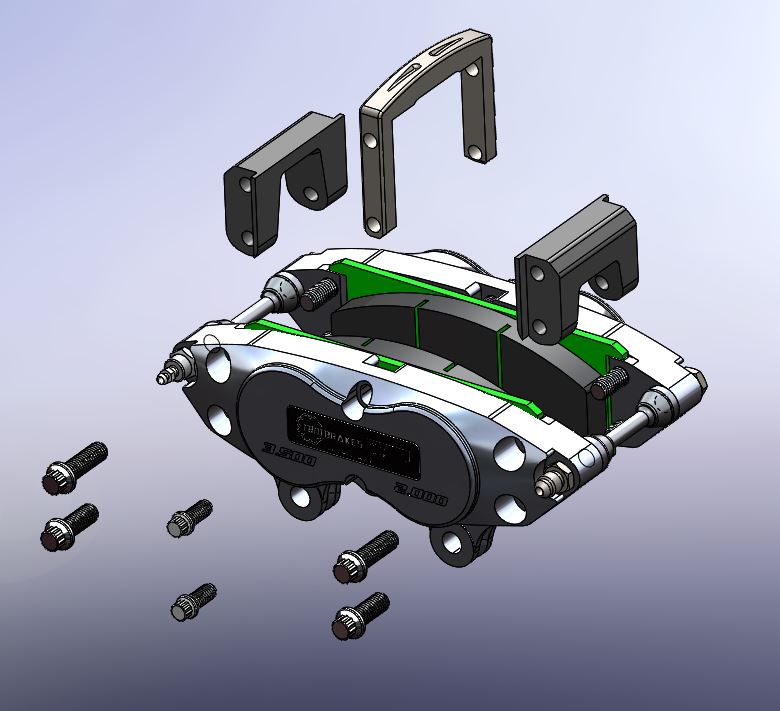Virtually all aftermarket calipers are made 1 of 2 ways: either 2 aluminum halves are bolted together, or the entire caliper is formed from one piece of aluminum, known as “Monoblock” construction. Aluminum does lots of things really well; working at elevated temperatures is not one of them. Typical aluminum alloys lose about 30% of their strength by 300°F. Some aluminum grades are better (i.e. 2618), but the trend is the same for all of them.
That is important because the pistons in the calipers are held in place with o-rings. These o-rings have different cross-sections and levels of hardness, which causes some variance in their performance, but the best of them will only retract the pistons .010-.012" per side for a max of .024" in piston retraction. If your caliper is flexing more than .024", you have brake drag (and a host of other issues). You can check this by simply measuring the caliper width while another person steps hard on the pedal. If your caliper is flexing that much when cold, imagine what happens when you lose 30-40% strength at higher temperatures.
At TBM we combat this issue in a couple of ways: a) we use the higher spec aluminum in low stress areas and, more importantly, b) we use heat-treated 4130 steel in the high stress areas (the bridge over the rotor) to keep the caliper stiff. 4130 steel starts off about four times stronger that 6061 aluminum, and at 300°F the steel retains ALL of its strength, a whopping six times stronger than the aluminum caliper.
Stiffness is important, so we make it a design spec that all of the calipers we manufacture deflect less than .010” @ 1000 psi line pressure. Less deflection equals less drag, which equals less heat, less wear, and longer life.
For more information on the benefits of TBM brakes, check out 6 Ways TBM Calipers are Better than What You are Currently Running
